As website developers, we understand the importance of a fast and efficient website. In today’s digital age, users expect websites to load quickly and perform seamlessly. Slow loading times and poor performance can not only frustrate users but also negatively impact a website’s search engine rankings. That’s why it’s essential to prioritize maximizing website speed and performance in order to provide the best possible user experience. In this article, we will explore some key strategies and techniques for optimizing website speed and performance.
You can take several steps to make your website faster, such as optimizing images, minimizing code, using browser caching, and using content delivery networks. Implementing these strategies will make our websites fast, efficient, and provide a smooth user experience to encourage visitors to return. Let’s learn about improving website speed and performance for success in the digital world.
– We optimize images for speed.
In our efforts to enhance website performance, an important aspect we focus on is the optimization of images to improve loading speed. This process involves compressing images without compromising their quality, using lightweight formats, and implementing modern techniques like lazy loading. By reducing the file size of images, we aim to minimize the data that needs to be transferred, resulting in faster loading times for users visiting our website. Additionally, optimizing images not only boosts speed but also contributes to a more seamless user experience, as visitors can access content swiftly without unnecessary delays caused by large image files. By implementing these practices, we are committed to ensuring that our website remains high-performing and user-friendly.
– Utilize browser caching for efficiency.
To further enhance the efficiency of our website, another vital strategy we employ is utilizing browser caching. By enabling browser caching, we instruct visitors’ browsers to store specific elements of our website locally on their devices upon initial visit. This cached data includes images, stylesheets, scripts, and other elements that contribute to the overall structure of our site. When users return to our website or navigate to another page within it, their browser can retrieve these stored elements locally, rather than requiring a new server request for each component.
This leads to significant time savings, as the browser can quickly load the page without having to download all the content again. By utilizing browser caching effectively, we aim to streamline the user experience and optimize the loading speed of our website, ensuring that visitors can access our content swiftly and efficiently.
– Minify CSS and JavaScript files.
To further enhance the performance and speed of our website, we also engage in the practice of minifying CSS and JavaScript files. Minification involves the process of removing unnecessary or redundant code without affecting the functionality of the files. By eliminating comments, formatting, and unused code within our CSS and JavaScript files, we can significantly reduce the overall file sizes. This optimized code is quicker to load, enhancing the efficiency of our website and reducing the time it takes for pages to render.
Minifying CSS and JavaScript files not only helps in improving loading speeds but also contributes to a more streamlined and seamless user experience for our website visitors. By ensuring that our code is lean and efficient, we prioritize the enhancement of our website’s performance and the satisfaction of our users.
– Enable Gzip compression for faster-loading.
Another crucial technique for maximizing website speed and performance is enabling Gzip compression for faster-loading. Gzip compression works by reducing the size of files that are transmitted between the web server and the browser. This compression method is particularly effective for text-based files like HTML, CSS, and JavaScript. By compressing these files before sending them to visitors’ browsers, we can significantly decrease the amount of data that needs to be transferred, leading to quicker loading times.
With Gzip compression in place, our website can deliver content more efficiently, contributing to a smoother and more responsive user experience. By incorporating this method alongside other performance optimization strategies, we can ensure that our website operates at peak efficiency and provides users with a fast and seamless browsing experience.
– Upgrade to a faster server.
To further enhance our website’s speed and overall performance, it is essential to consider upgrading to a faster server. A faster server can significantly impact how quickly our website responds to user requests and loads content. By increasing the server’s processing power and capacity, we can ensure that our website can handle higher volumes of traffic without experiencing slowdowns or performance issues.
Additionally, a faster server can reduce latency and improve the overall reliability of our website, making it more resilient during peak usage periods. Through this upgrade, we can provide visitors with a smoother and more efficient browsing experience, ultimately enhancing user satisfaction and engagement on our platform.

– Implement lazy loading for efficiency.
When it comes to optimizing our website for speed and performance, another strategy we can implement is lazy loading. Lazy loading is a technique that defers the loading of non-essential resources at the initial page load, only fetching them when the user scrolls down or interacts with the page. By employing lazy loading for images, videos, and other media elements, we can improve the website’s loading times and reduce the initial page weight.
This not only enhances the user experience by ensuring faster initial loading but also helps in conserving bandwidth for both the visitors and the server. Lazy loading can be particularly beneficial for websites with extensive multimedia content, allowing us to maintain efficiency without compromising on the quality of user interactions.
– Reduce HTTP requests for speed.
To further enhance our website’s speed and performance, it is imperative to reduce the number of HTTP requests made during page loading. Each HTTP request adds to the load time of a webpage, as the browser needs to retrieve various resources like images, scripts, CSS files, and other elements from the server. By minimizing the number of HTTP requests, we can significantly improve the website’s loading speed.
Strategies such as combining CSS and JavaScript files, utilizing CSS sprites for images, and reducing redundant elements on the page can help in optimizing the number of requests made, thereby streamlining the loading process. Additionally, implementing techniques like asynchronous loading of scripts and utilizing content delivery networks (CDNs) can further reduce the latency associated with HTTP requests, contributing to a faster and more efficient website browsing experience.
– Use a Content Delivery Network.
In our pursuit of maximizing website speed and performance, embracing the utilization of a Content Delivery Network (CDN) stands as an essential strategy. A CDN is a network of servers distributed across various locations worldwide, designed to store cached copies of website content such as images, videos, scripts, and other elements.
By leveraging a CDN, we can significantly reduce the physical distance between the user and the server, enabling quicker retrieval and delivery of website resources. This distributed approach ensures that users receive content from the nearest server, minimizing latency and enhancing overall page-loading speed. Implementing a CDN not only optimizes website performance but also enhances reliability and scalability, making it an indispensable tool in our quest for an efficient and seamless online presence.
– Prioritize above-the-fold content loading.
Ensuring optimal user experience on a website involves prioritizing above-the-fold content loading. By focusing on the content that appears at the top of the webpage first, we can enhance the initial impression for visitors and provide immediate access to critical information. This means that essential text, images, and interactive elements should be loaded promptly without delays, enabling users to engage with the core features of the site swiftly. Prioritizing above-the-fold content loading can significantly impact user engagement and retention, as it sets the tone for the overall browsing experience and influences how users perceive the website’s speed and responsiveness. By strategically organizing and delivering above-the-fold content efficiently, we can create a more compelling and user-friendly interface that encourages continued exploration and interaction.
– Regularly test and improve performance.
To maintain an optimal level of performance and ensure that our website continues to deliver a seamless user experience, it is imperative that we regularly test and improve various aspects of its functionality. By consistently monitoring key performance indicators such as page load times, server response rates, and overall site responsiveness, we can identify areas that require enhancement and implement targeted improvements. Through continuous testing and analysis, we can address potential bottlenecks, optimize resource utilization, and fine-tune the website’s performance to meet the evolving needs of our users. Additionally, conducting routine performance assessments allows us to stay proactive in addressing any emerging issues and making necessary adjustments to enhance overall speed and efficiency. By embracing a culture of ongoing testing and improvement, we can ensure that our website remains at the forefront of delivering a high-quality browsing experience for our visitors.
In conclusion, we have explored several effective strategies to maximize website speed and performance. By implementing techniques such as optimizing images, leveraging browser caching, and minifying CSS and JavaScript files, we can enhance the user experience and boost our search engine rankings.
It is important to regularly monitor and analyze our website’s performance using tools like Google PageSpeed Insights and GTmetrix to identify areas for improvement. Remember, a fast and responsive website not only improves user satisfaction but also contributes to the overall success of our online presence. Let us continue to prioritize website speed and performance to ensure our digital platform remains efficient and competitive.
FAQ
What are some common factors that can slow down a website’s loading speed?
Some common factors that can slow down a website’s loading speed are large image or video files, excessive plugins or widgets, inadequate hosting server resources, lack of caching, and poorly optimized code. These issues can negatively impact user experience and deter potential visitors. By addressing these factors, we can improve the overall performance and speed of our website to ensure a seamless browsing experience for our audience.
How can optimizing images help improve website speed and performance?
Optimizing images can help improve website speed and performance by reducing file sizes, which in turn decreases load times. By compressing images without compromising quality, we can ensure quicker page loading for all users. This can lead to a better user experience, higher engagement, and improved SEO rankings. Overall, optimizing images is a crucial step in enhancing website performance and ensuring smooth navigation for visitors.
What is browser caching, and how does it impact website speed?
Browser caching is a process where a web browser stores copies of web resources to reduce loading time on subsequent visits. This helps in speeding up website performance as it reduces the amount of data that needs to be downloaded each time a user visits a site. By storing static files like images, stylesheets, and scripts locally, browsers can quickly retrieve these files from the cache instead of fetching them from the server again. Overall, browser caching plays a crucial role in improving website speed and user experience.
How can minifying CSS and JavaScript files contribute to faster website loading times?
Minifying CSS and JavaScript files helps in reducing file sizes by eliminating unnecessary characters, spaces, and comments. This results in faster loading times as smaller files require less bandwidth and can be fetched by browsers more quickly. By optimizing our code in this way, we improve the efficiency of our website’s performance, making the user experience smoother and enhancing overall speed. This practice is crucial for ensuring that our website loads swiftly and efficiently for all visitors.
What are some tools or techniques that can be used to measure and analyze website speed and performance metrics?
We can use tools like Google PageSpeed Insights, GTmetrix, and Pingdom to measure website speed and performance metrics. These tools provide insights on factors like page load time, server response time, and overall performance scores. By analyzing these metrics, we can identify areas for improvement and optimize our website for better user experience and search engine rankings. Additionally, techniques such as image optimization, minification of CSS and JavaScript files, and caching can also be used to enhance website speed and performance.
